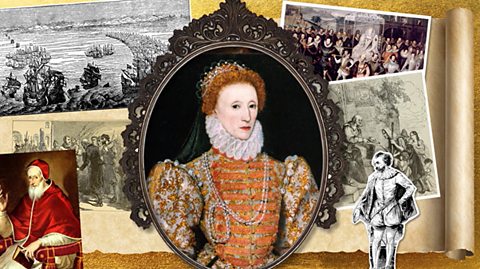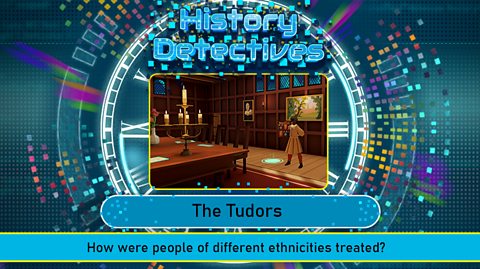Key points
- Historians can trace the lives of over 200 people of African origin who lived in England during the Tudor period.
- These individuals did a variety of jobs and lived in different places, from cities to country villages. Some even lived at the courts of King Henry VIII and Queen Elizabeth I.
- People of African origin came to be in England via a range of routes. Some came as traders and ambassadors, some directly from the continent of Africa, while others arrived via the Spanish and Portuguese empires.
Video about African people in Tudor England
Narrator:During Tudor times, there were hundreds of Black people living and working in England. Many were free members of society who lived in a world where skin colour was less important than religion and class.
John Blanke was employed as a trumpeter in the courts of Henry VII and Henry VIII. There is a painting of John on horseback playing trumpet at a jousting tournament held in celebration of the birth of Henry VIII's son. John also successfully petitioned Henry VIII for a pay rise. And Henry even gave John clothes for his wedding.
This suggests John was held in high regard by the King. Cattelena of Almondsbury lived in a small Gloucestershire village. Sources show that her most valuable possession was a cow, that supplied her with dairy products that she sold to her neighbours. There is further evidence showing she owned many other household items.
Together this suggests that she was a free woman and participated fully in village life. Jacques Francis was an expert diver and swimmer, a skill that was very rare at the time. In 1546, he was employed as part of a team that dived to retrieve cannons from the wreck of the Mary Rose, that had sunk during a battle with the French off the coast near Portsmouth.
Jacques also became the first known African to give evidence in a court of law when his boss was accused of theft. The lives of John, Cattelena and Jacques suggest that Black people lived and worked as accepted members of society in Tudor England.
Game - diversity in Tudor England
Play a History Detectives mission exploring diversity in Tudor England.
You can also play the full game.
How do we know about the lives of African people in Tudor England?
Historians such as Imtiaz Habeeb, Onyeka Nubia and Miranda Kaufmann have found evidence to suggest that many people of African origin lived in England during the Tudor period. These historians have discovered information about these people and their lives in letters, legal records and church records of births and deaths.
There is also evidence that people of African origin served in the royal courts of Henry VII, Henry VIII and Elizabeth I.
People of African origin also lived in the homes of the nobilityThe people at the top of the social hierarchy with lands, large homes and connections to the monarch and their court.. servantA person who was paid to perform tasks for someone else, usually at the home of their employer. of African descent lived in the homes of Elizabeth Iâs favourite courtiers, Robert Dudley, Sir Walter Raleigh, Sir Francis Drake, Sir William Cecil and Sir Robert Cecil.
African people in Roman England
People of African originA person born either in Africa, to African born-parents or with parents or grandparents of African descent. have visited, worked, made lives and had families in Britain since at least AD43, when the Romans arrived. A group of North African soldiers were based at Hadrian's WallHadrianâs wall was built by the Romans to mark the northern boundary of Roman Britain. in the north of England. At a similar time, a woman of sub-Saharan African heritage was living at the other end of the country. Analysis shows that she had lived in England since she was a small child. She may have even been born in England.
The âIvory Bangle Ladyâ lived in Roman York in the 4th century. She was buried with expensive items such as earrings and ivory bracelets. Analysis of her skeleton by archaeologists suggests that she was of North African descent.
Historians are uncovering more evidence of people of African heritage who lived in Britain during the medieval era. It seems as though these numbers were much smaller than in Roman Britain or from the Tudor period onwards.
How did people of African origin arrive in Tudor England?
Some people of African origin came directly from the continent of Africa as traders or as ambassadorAn important official sent by the leader of one country to another, to organise such things as alliances or treaties. . Abd el-Ouahed ben Messaoud came from Morocco to have treaty talks with Elizabeth I. Others arrived via Spain and Portugal, which had relatively large populations of people of African origin.
Most people of African heritage in Britain were servants. Many people in Tudor times were servants, and they were of varying status. Some worked for themselves as skilled craftspeople. Reasonable Blackman, who was of African heritage, was a silk weaver who lived in Southwark, London, with his family.
The slave trade in the Tudor period
During the Tudor period there was no law that banned slavery in England, but neither was there a law that officially allowed it. Although some English individuals sold enslaved people in the 1500s, English involvement in the transatlantic slave trade did not begin on a larger scale until the 1600s.
One person who had arrived in England via Spanish and Portuguese slave trading was an âEthiopianâ man mentioned in a 1587 court case. Though he is described as âEthiopianâ, we cannot know precisely where he was from, as this term was used to refer to people from anywhere in Africa during the Tudor period. He had been brought to England aboard an English ship after being captured from the Spanish in the Americas. He was sold, illegally, to Hector Nunes, a Portuguese doctor who was living in London.
In Portugal, where Nunes had been born, it was legal to keep enslaved people. Nunes brought a court case in which he stated that the unnamed 'Ethiopian' man refused to serve him, though Nunes acknowledged that he had no legal right to force him to do so.
Why did Spain and Portugal have larger populations of people of African origin than England in this period?
Spain and Portugal had developed trading links with West Africa from the fifteenth century. When both nations began to colonise the Americas, from 1492, a transatlantic slave trade developed between Spain, Portugal, Africa and the colonies in the Americas. Britain became involved in the transatlantic slave trade later than Spain and Portugal.
What jobs did people of African origin in Tudor England do?
John Blanke
Video about John Blanke
In this video, Miranda Kaufmann and David Olusoga discuss the Westminster Tournament Roll, which features John Blanke, a trumpeter of African origin
David:Iâve come to the National Archives in Kew, to meet an historian whose researched the lives of 200 Black people all of whom lived here in Britain in the 1500s.
Miranda:This image is part of a 60 foot long roll depicting this prestigious event, the Westminster Tournament of 1511 which Henry VIII put on to celebrate the birth of his son.
Here we have the face of John Blanke, an African trumpeter, and you can see the Royal Standard hanging from the trumpet that heâs playing. And the trumpeters were really important at tournament, you can imagine they have to herald the arrival of every new jouster on to the field.
Sometimes if you were an ambassador, you would travel around Europe with a trumpeter to announce your important arrival.We have records of him being paid wages. We have a petition from John Blanke asking for a pay rise.
David:So heâs writing to the king asking, saying "I want more money"?
Miranda:Thatâs right. He says his wage now is ânot sufficient to maintain and keep him to do your grace like serviceâ.
David:And does Henry sign it?
Miranda:Yes, right here you can see this faint signature.
David:So this is a professional musician, heâs in the courts of the King. Many of the Black people living in Britain who migrated here would have been of much lowlier status. Is that right?
Miranda:Yes. Most of the individuals we have records for are in domestic service.
John Blanke was a Tudor musician. Historians believe that he may have come to England alongside Catherine of Aragon, as part of her household staff. Records tell us that John was employed by Henry VII and Henry VIII; there is evidence to show that he performed at both the funeral of Henry VII and the coronation of Henry VIII.
John also had an important role in the Westminster Joust of 1511. This joust was a grand spectacle to celebrate the birth of Henry and Catherineâs son, Henry, who died shortly afterwards. John would have been part of a large group of trumpeters who announced the entrance of the King at the beginning and end of the joust.
In Tudor society, trumpeters were valued musicians. Trumpeters like John were used at courtA name given to the residence of the monarch, their servants and politicians. The court regularly moved between different palaces. occasions, on the battlefield and to announce the arrival of important royals. John received eight old pence a day in the reign of Henry VII. This was double the wage of an ordinary farm labourer and three times that of a servant.
John was so valued that he was successful in winning a pay rise from Henry VIII. In 1512, he received a gift of new clothing from the King when he got married. John disappears from the record after this gift. We can infer from this that he may have left royal service at this point, but without written evidence, we cannot know for certain.
Jacques Francis
Video about Jacques Francis
In this video, Miranda Kaufmann and David Olusoga discuss the evidence that tells us about the life of Jacques Francis, an expert diver of African origin
David:Tell me about this document and what it tells us.
Miranda:This is another African. In this document, Jack Francis is giving testimony in a court case, in the High Court of Admiralty. His master, a Venetian merchant called Peter Paulo Corsi, has been accused of theft and theyâre accusing Corsi of stealing tin from a ship called the Saint Mary and Saint Edward.
David:Whatâs the significance of the fact that Jack Francis is clearly giving evidence in court?
Miranda:Not everybody was able to give testimony in a court of law. In England we still have serfs or "villeins", who were a medieval feudal hangover. If you were the lord of the manor, a landowner, that land would come with workers who were tied to the land or tied to you personally as the lord. And they gave their labour without payment, and they were not allowed to testify in the courts of law because they were not free. So this African man was able to testify where various English people would not.
Jacques Francis was an expert swimmer and free divingDiving deep under water without breathing equipment.. This meant that he was able to hold his breath for a long time and dive down to the seabed. Jacques was born on the coast of West Africa in a region which, according to Miranda Kaufmannâs research, was known for free diving.
In the late 1540s, Jacques was employed by a Venetian man, Peter Paolo Corsi. Corsi specialised in recovering goods from sunken and wrecked ships. In 1546, Jacques was part of a group of salvage divers and workers hired to recover guns from the Mary Rose for King Henry VIII. The Mary Rose, which was one of Henry VIIIâs ships, had sunk in 1545 along with most of its crew during a battle with the French off the coast of Portsmouth. Jacquesâ job was to dive to the ocean bed and tie ropes around objects that would then be pulled up. It was a dangerous job that needed years of practice.
We know about Jacques and his coveted diving skills because he was a witness in a court case in February 1548, between his employer and Italian merchantA trader.. Jacques gave evidence when his employer was accused of stealing tin and other materials from the wrecks of two Italian ships, the Sancta Maria and the Sanctus Edmundus. This shows that he was very respected, as not every member of Tudor society was allowed to give evidence in court.
Diego and Drake
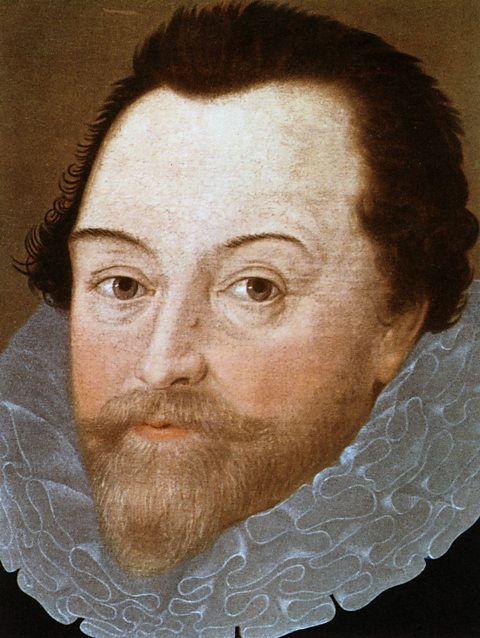
We do not know for certain where Diego came from, or even his full name. We do know, however, that in the 1570s Diego had been enslaved peoplePeople forced into enslavement. for some time by the Spanish in Panama, Central America. While there, he had come to know the Cimarron peopleFree communities of people of African origin in Panama, who had escaped enslavement in the Spanish settlements of the Americas., who were Africans who had escaped from slavery. Diego was also aware of the routes taken by Spanish treasure as it travelled across Panama to be taken back to Spain.
Diego may have lived for some time amongst the Cimarron. In 1572, Diego encountered the English privateersPirates who sailed to raid foreign ships with the permission of their monarch from around 1560-1856. Sir Francis Drake. Drake had been involved with slave trading voyages, but it seems that he did not enslave Diego. Instead, Diego worked with Drake and his men to formulate a plan to seize Spanish gold and silver as it was transported across Panama. Diegoâs intelligence and connections with the Cimarron people were key to the success of this plan. Drakeâs crew, Diego and the Cimarron would attack the Spanish treasure train as it approached the port settlement of Nombre de Dios.
150,000 pesos of Spanish silver and gold were captured, and Diego joined Drakeâs crew permanently. Diego came to Plymouth, Devon, and in 1577 was part of Drakeâs crew on his circumnavigation of the globe. Diego died of an arrow wound and was buried at sea near the Maluku Islands, in modern-day Indonesia, in 1579.
The historian Miranda Kaufmann proposes that the Drake Jewel, given by Elizabeth I to Sir Francis Drake, was a gift to celebrate Drakeâs alliance with Diego and the Cimarron. The jewel is a locket with a portrait of Elizabeth I inside. On the outside are two figures carved in a precious stone called sardonyx. The brown and white layers of the stone were carefully carved to show a black and white figure, which symbolise the unity of the English and Africans against the common enemy of Spain.

Mary Fillis
Mary Fillis came to England as a young child. She was born in 1577, the daughter of a Moroccan basket weaver and shovel maker. She may not have remembered much of her childhood in Morocco, or the Muslim faith she was likely born into.
Mary arrived in England in the early 1580s. As a young woman she worked for a merchant called John Barker as a servant; Barkerâs trading connections could explain how Mary arrived in England. She worked with other young servants of African heritage in his household, and itâs likely she would have seen other people with the same heritage in her local area.
In the 1580s, a deep connection between England and Morocco was developing, fuelled by trade and a mutual alliance against their joint enemy of Spain. In 1589, a Moroccan ambassador came to England to have trade talks and offer Elizabeth I military assistance in the event of conflict with Spain on behalf of the ruler of Morocco, Ahmad al-Mansur. In 1600, more ambassadors from Morocco came to London on a six-month visit to the court of Elizabeth I. They hoped that, together, Morocco and England would defeat Spain.
When Mary was slightly older, she became an assistant to a dressmaker. It is possible that she was keen to learn a trade and become more independent. While she was there, she learnt the basics of Christianity, such as the Lordâs Prayer.
Her story has survived because it was written down as part of a record when she was baptised as a Christian. She was baptised in June 1597, during the reign of Elizabeth I, at St Botolphâs Aldgate Church, London.
Cattelena of Almondsbury
Cattelena lived in the village of Almondsbury, seven miles north of Bristol, in the west of England. Her Hispanic-sounding name suggests that she may have arrived in England via Spain, Portugal or their colonies. What is known about Cattelena comes from a list of the goods that she owned, which was created after her death.
From this inventory, we know that Cattelena was of African origin, that she died in 1625 and that she was an âindependent singlewomanâ. This meant that she had no husband or family, but looked after herself by earning a living. Around 30% of Tudor women did not get married. From her inventory, it appears that Cattelena made her living from her most expensive possession: a cow.
Cattelena probably kept her cow on the common opposite the village church. It would have grazed there, and she'd have milked it in the evenings. Cattelena made money by selling spare milk, or cheese and butter, to her neighbours.
Cattelena was not very wealthy. She lived in a shared home and on her death owned her cow, a bed, pillows, a set of sheets, a quilt, a pewter candlestick, a tin bottle and twelve spoons, among other items.
The inventory of Cattelena's possessions gives us an insight into what an ordinary Tudor woman might own. It also gives us a window into the lives of people of African origin living in the west of England, and in rural areas.
Test your knowledge
Play the History Detectives game! gamePlay the History Detectives game!
Analyse and evaluate evidence to uncover some of historyâs burning questions in this game.

More on The Tudors
Find out more by working through a topic
- count1 of 5
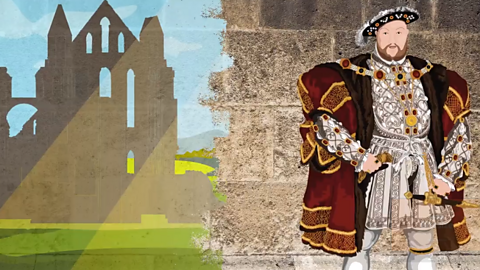
- count2 of 5
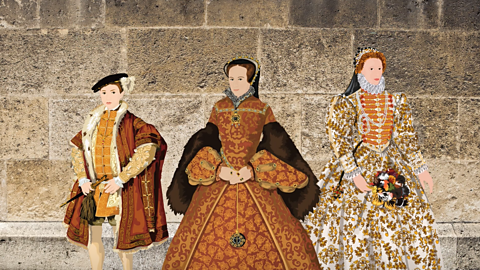
- count3 of 5
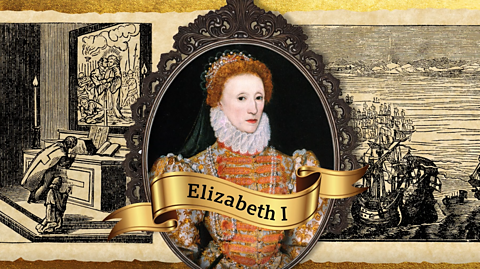
- count4 of 5
